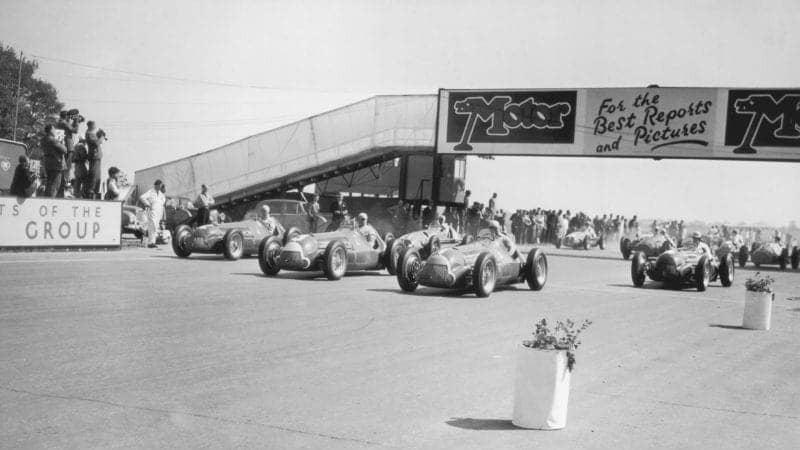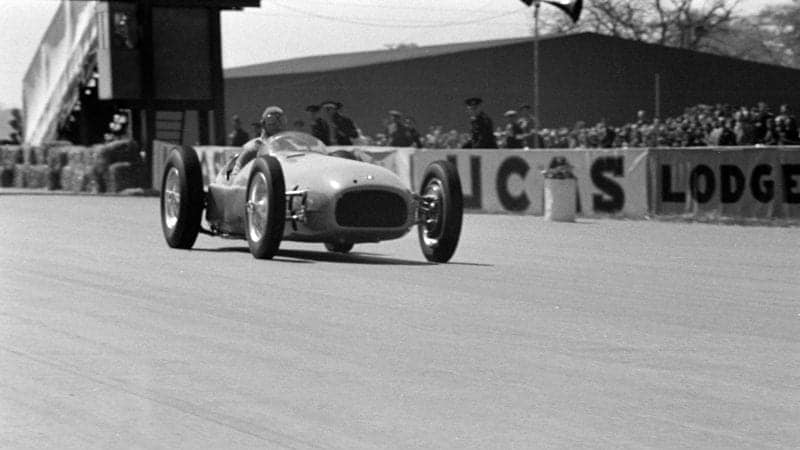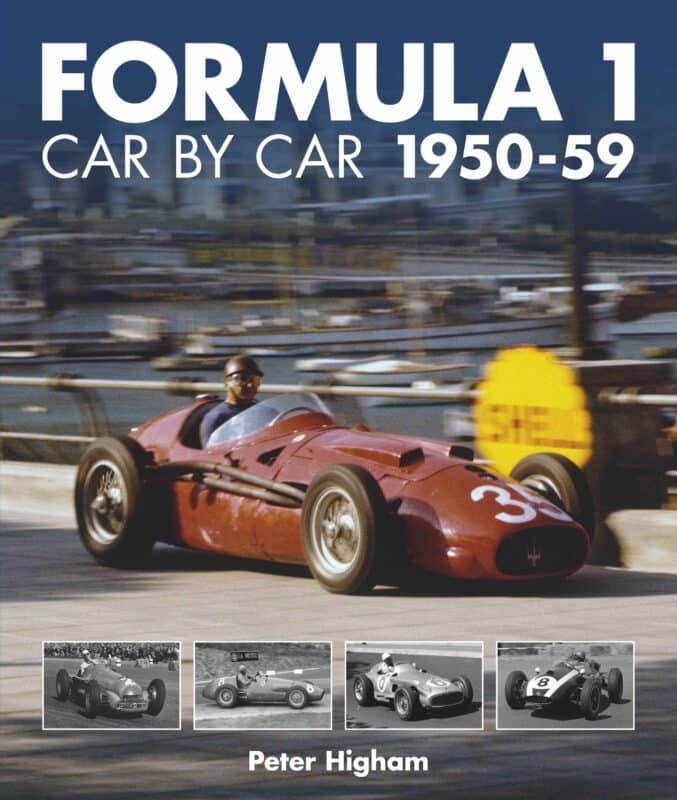The new World Championship began at Silverstone on Saturday 13 May 1950 with the drivers (and the top three in the F3 race) presented to the royal party by Earl Howe before the start. The race was awarded the honorary title of GP of Europe and was flagged off by Brivio. A crowd of up to 100,000 paid between six shillings (general admission in advance) and £2 2s (for the main pit grandstand) to watch a dominant Alfa Romeo 1–2–3. Alfa’s thirsty supercharged cars duly won the title but Ferrari exploited the larger- capacity normally aspirated alternative to challenge by the end of the season.
The most disappointing aspect for British fans was British Racing Motors. Equipped with a V16 engine, the BRM type 15 had been unveiled amid much hype at Folkingham airfield on 15 December 1949 and founder Raymond Mays gave a brief demonstration during the 1950 British GP meeting. However, the car did not appear in a championship race and Raymond Sommer broke its transmission at the start of his heat when it finally made its début in Silverstone’s non-championship International Trophy. Reg Parnell won a couple of lesser races at a wet Goodwood in September before both he and Peter Walker retired from the non-championship season finale in Barcelona. Goodwood apart, it had been a sorry start for Britain’s national team.





